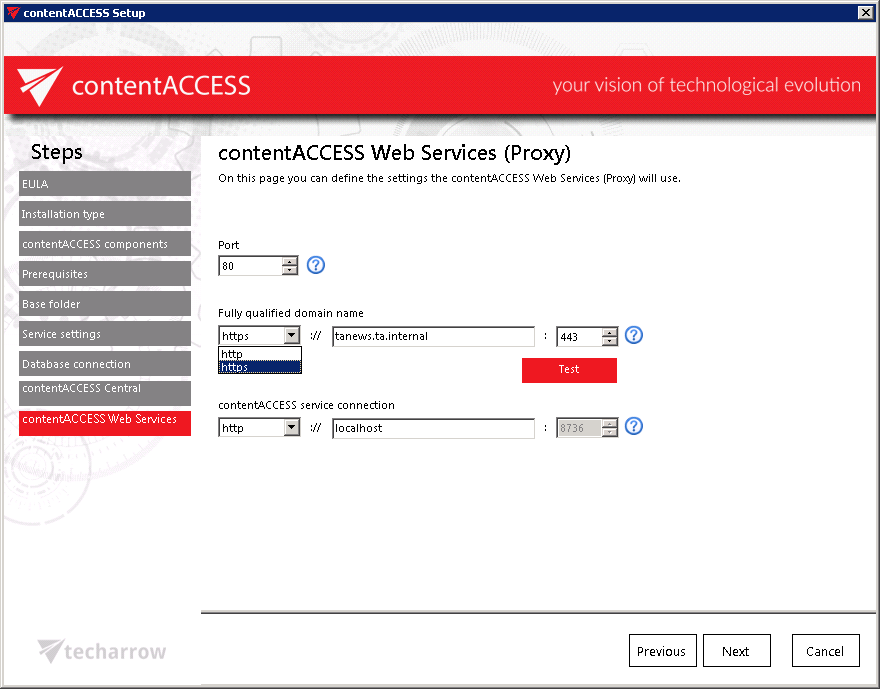2.1.9.contentACCESS Web Services (Proxy)
On this page you can define the settings, that contentACCESS Web Services (Proxy) will use. The same rule applies for these configurations as for the contentACCESS Central Administration settings above.
Proxy server is a must-have tool for customers who have contentACCESS Email Archive (or any email based plugins) and want to retrieve their archived emails from shortcuts, or they use accessGATE mobile.
Port: This port is the physical port of contentACCESS Web Services used by the Internet Information Services (IIS) on the current server.
Fully qualified domain name: This URL must be accessible from everywhere where the user is coming from. If you want to enable a secure connection for the user, choose https. Keep in mind, that https must be configured manually on the IIS (more here). This value is used for Email archive shortcut retrieve as well.
The FQDN that’s defined here is written to the System settings (System tab => Services group => System page, section External accessibility settings: Retrieve server FQDN) in the Central Administration, and can be changed from there at any time. By the next update the setup will automatically read the value which is defined on the System page.
If Proxy uses https, the FQDN URLs of further contentACCESS components (contentWEB, Central login page) will be automatically prefilled by the package with https connection, too.
contentACCESS service connection: This URL is used by the contentACCESS Web Services to communicate with the contentACCESS server. If contentACCESS server is installed on the same machine, you can use “localhost” as host name.
Hint: If the communication port with the contentACCESS server is changed, then the communication between the given component and the contentACCESS service is ensured by the contentACCESS Proxy. If the Proxy is not installed and the port is changed, then the service connection won’t be established. The same rule applies for the connection between the contentACCESS service and another contentACCESS components as well (in the Central administration and Central login page setup windows it is disabled to change the port number).

